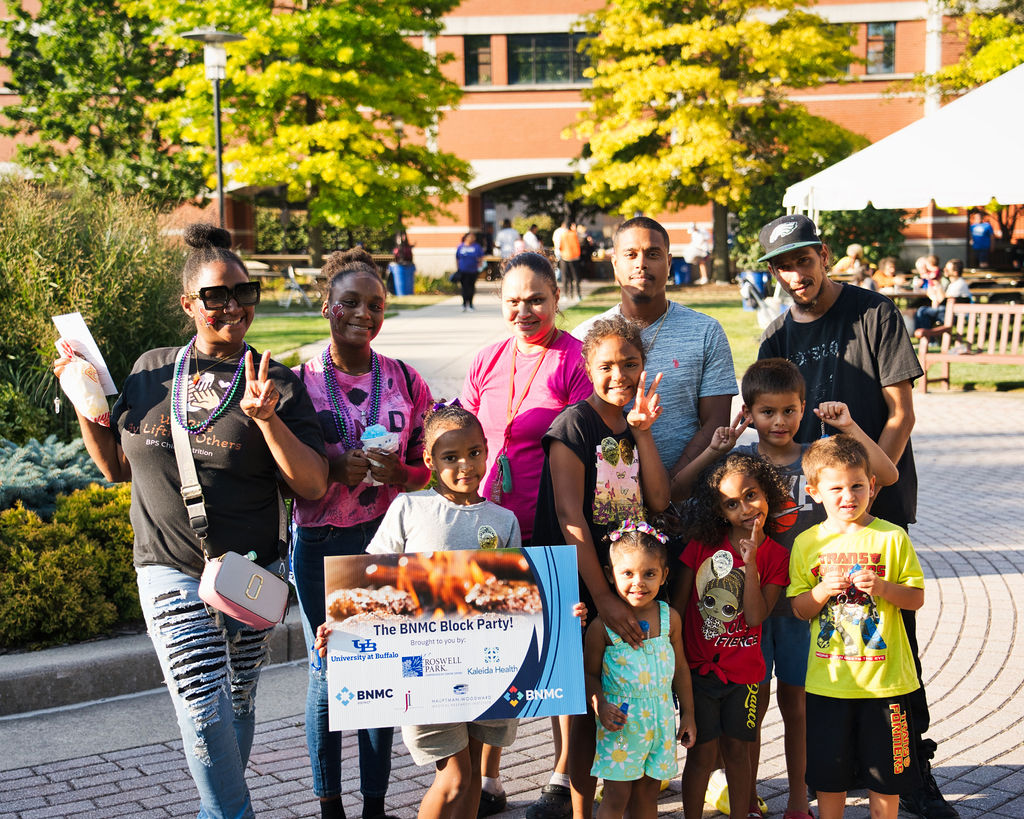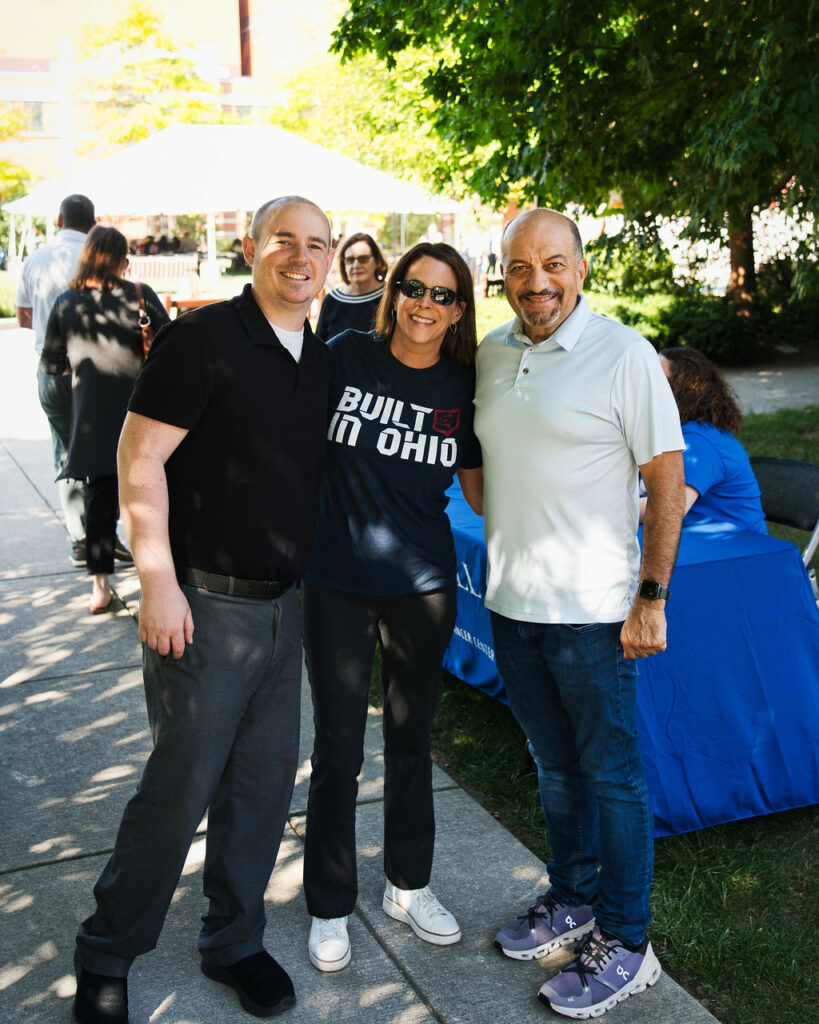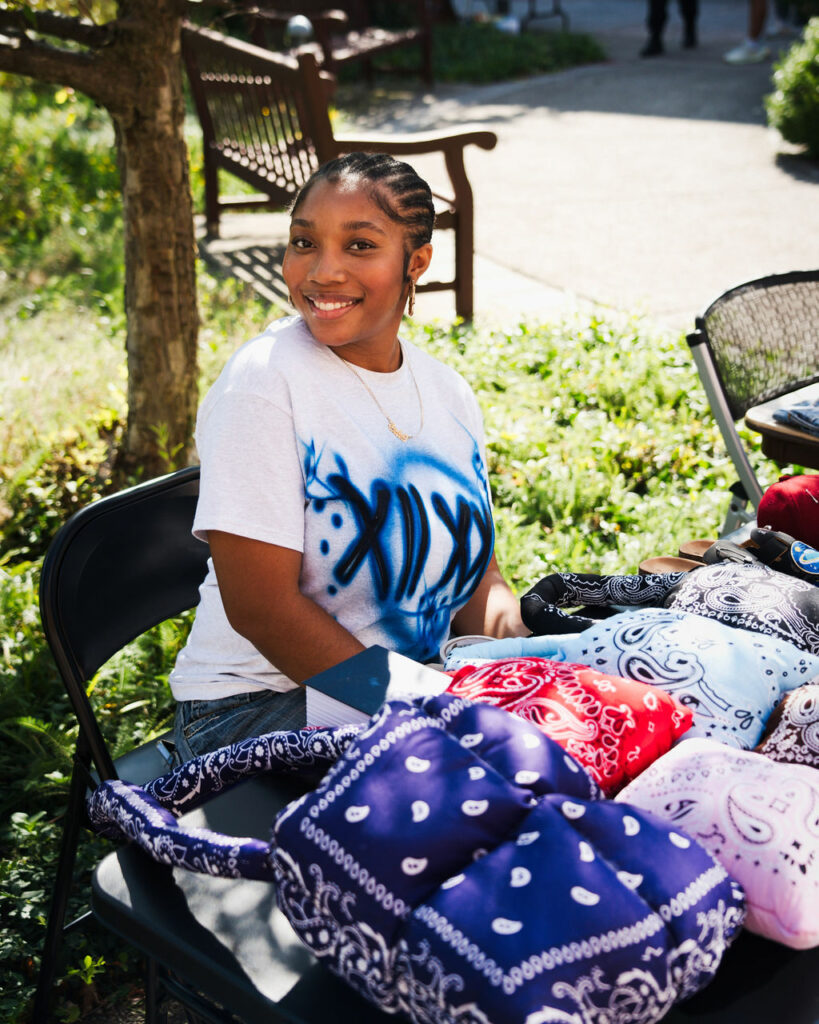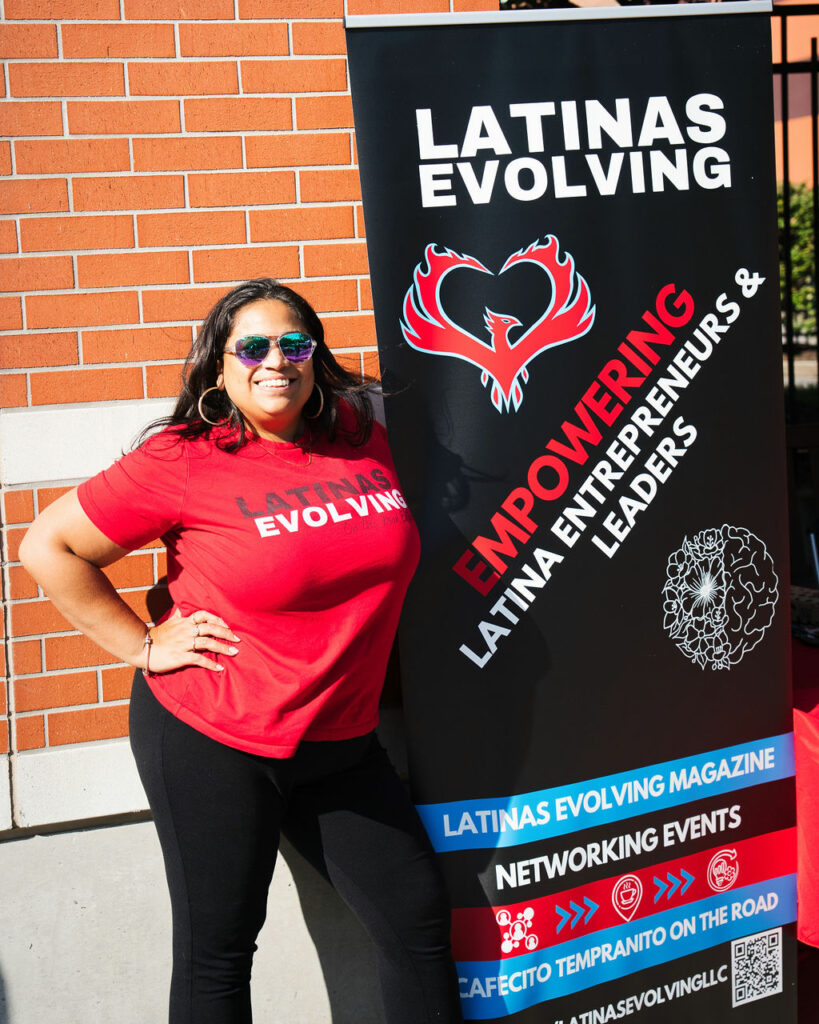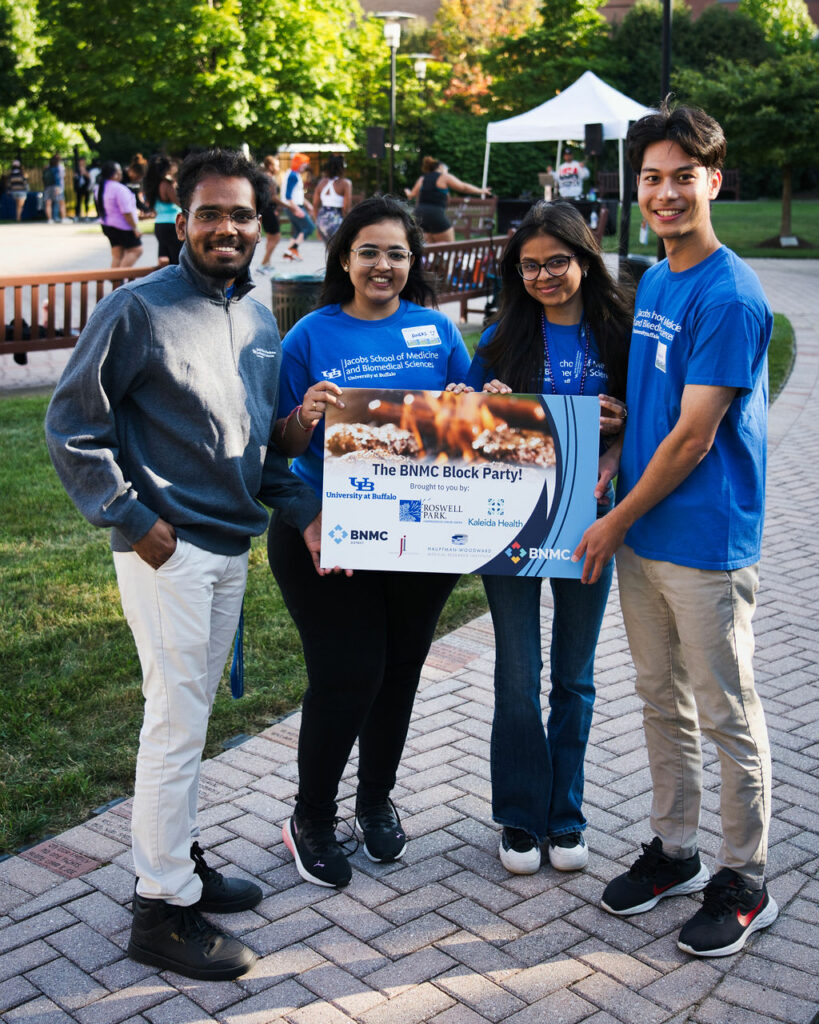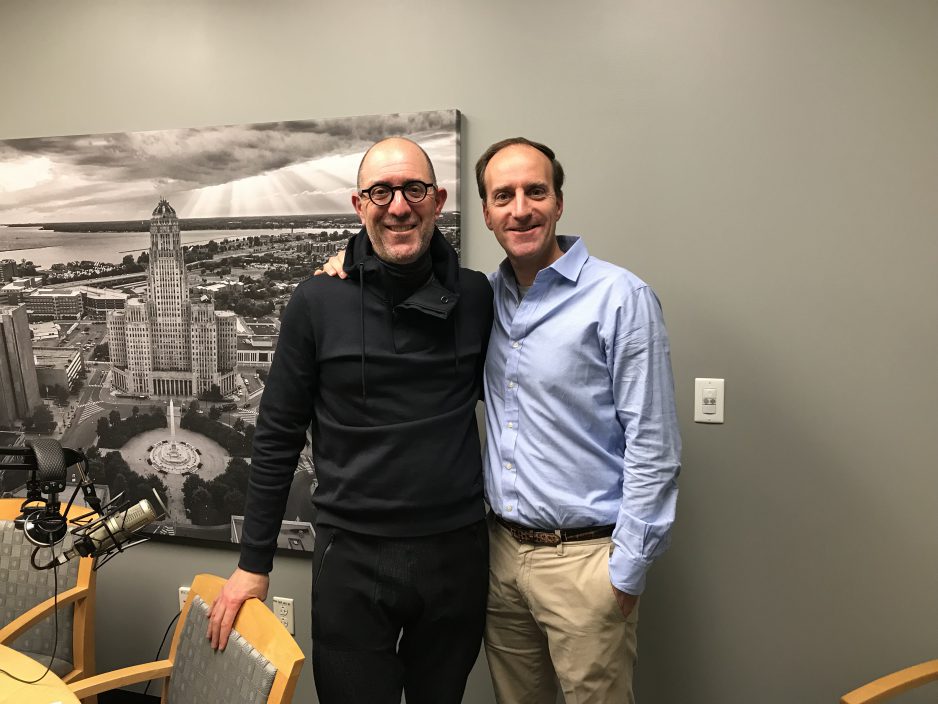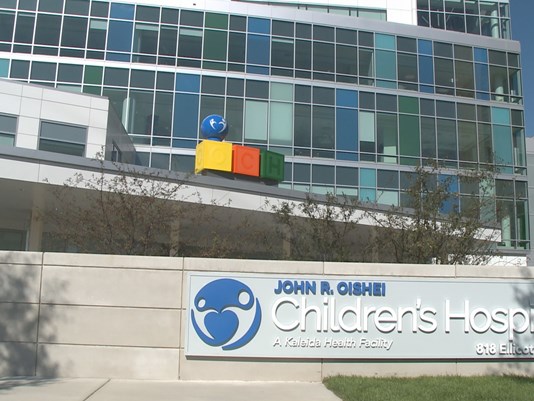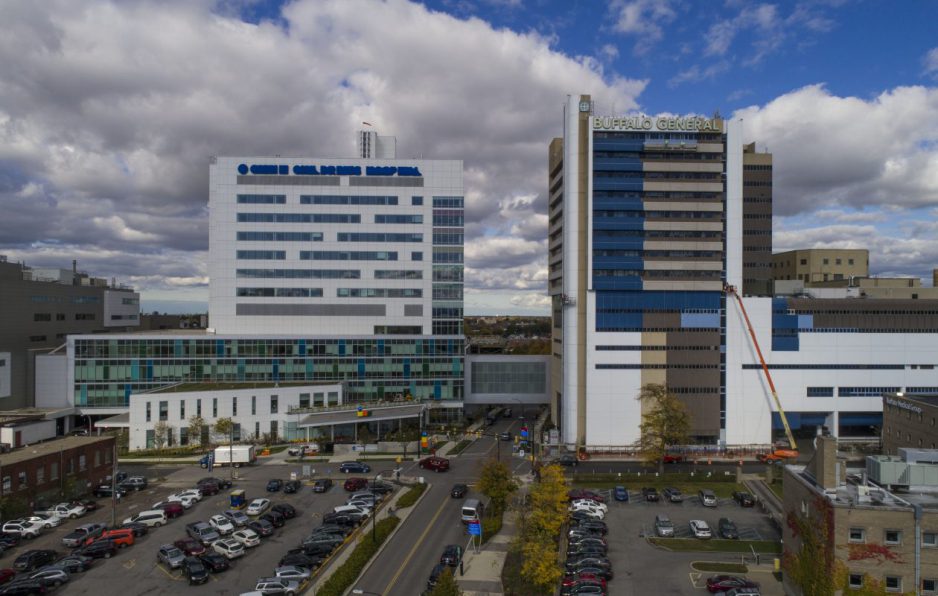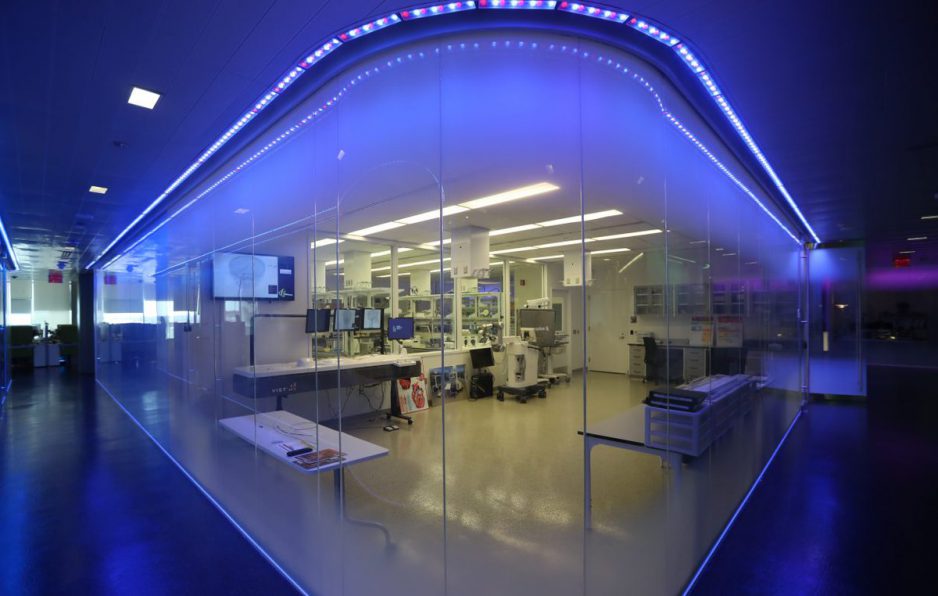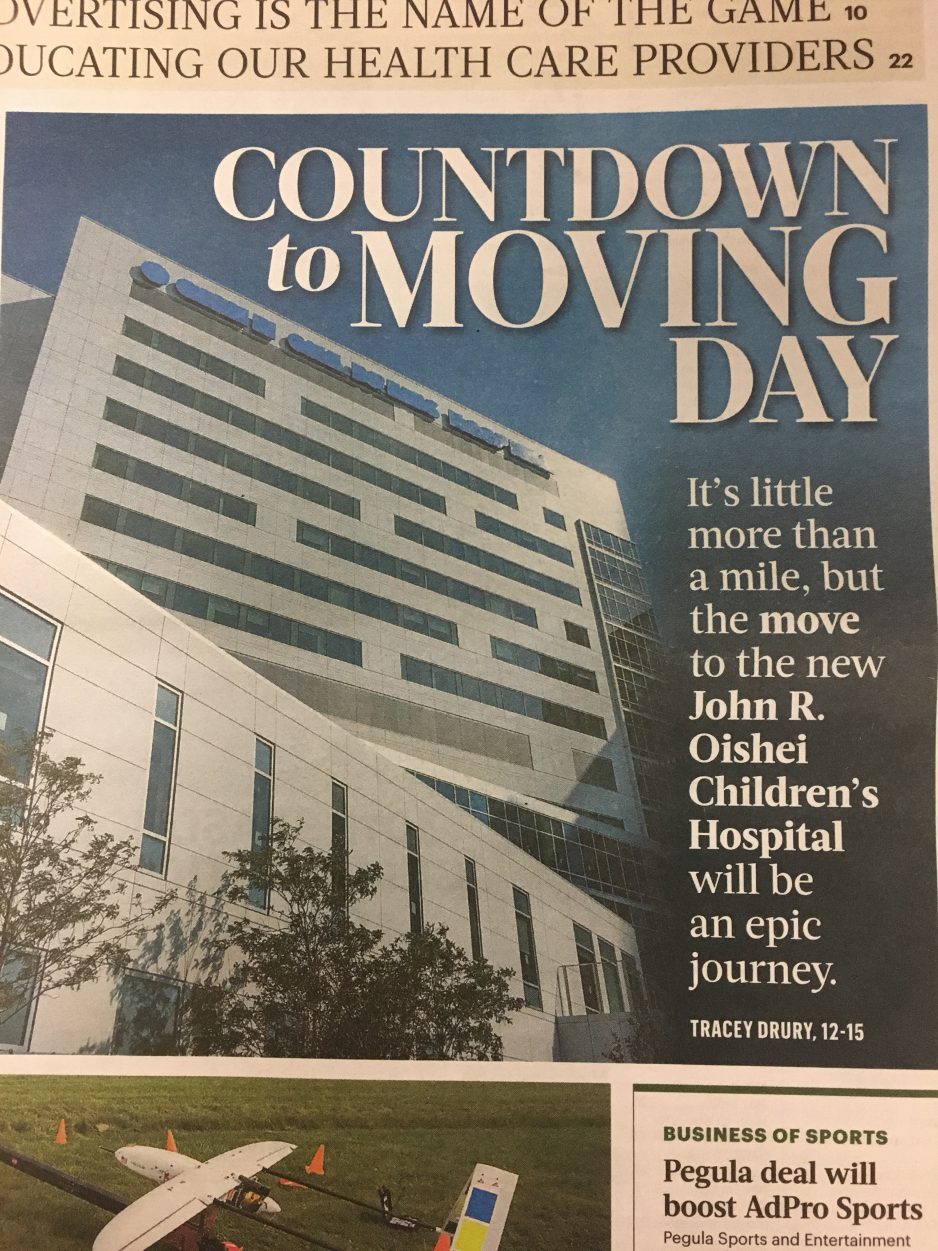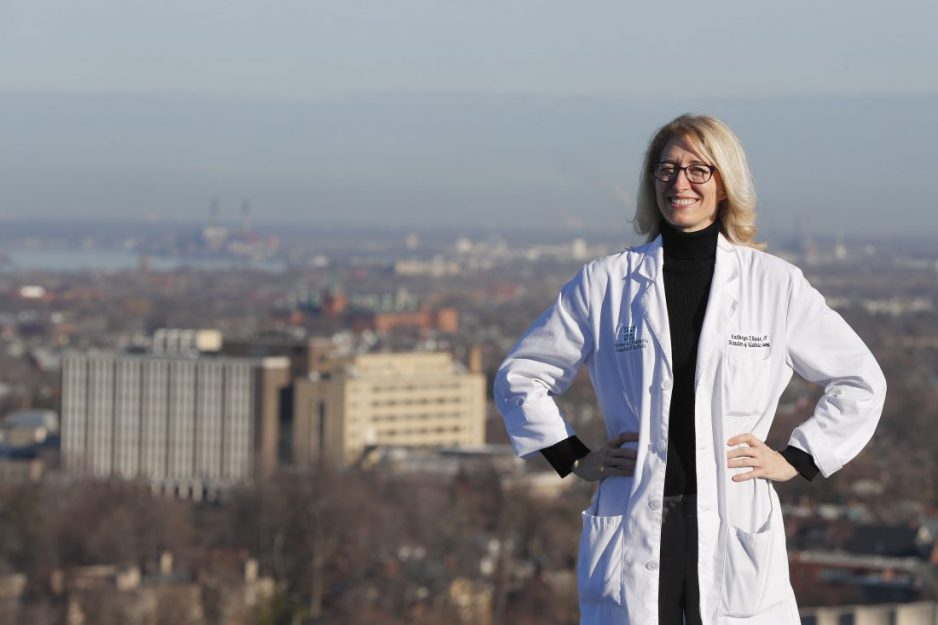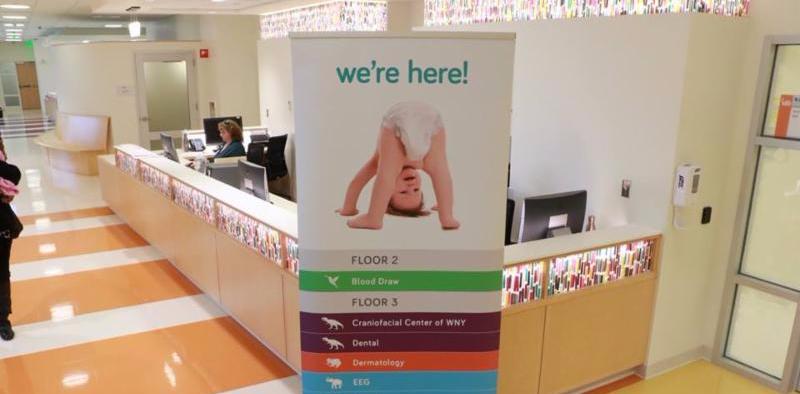The new John R. Oishei Children’s Hospital that will open this week on the Buffalo Niagara Medical Campus exemplifies state-of-the-art pediatric care.
The hospital tower offers the latest in medical technology and thoughtful design. A connected outpatient center replaces dated facilities that were costly to maintain and no longer met patients’ expectations.
The new hospital, together with a new University at Buffalo medical school under construction along Main Street, will solve a big piece of the puzzle on a medical campus trying to attract life sciences companies to start or move here.
It all looks like a major no-brainer. But it wasn’t always so.
The initial attempt nearly 18 years ago to move Women and Children’s Hospital from Bryant Street set off the fiercest of community battles. At one point, in 2002, thousands of people, including sports stars Jim Kelly and Pat LaFontaine, crowded Niagara Square in support of a campaign to “Save Our Children’s Hospital” and keep it where it was founded in 1892.
The unpredictable and stormy path that led to the $270 million building on Ellicott Street that will officially open Friday easily could have gone in a different direction.
It took time, but the end result was worth waiting for,” Dr. Steven Lana said.
Lana, a pediatrician, was one of a host of physicians active in the campaign that arose against the original plans to move Women and Children’s.
There were many other influential people along for the project’s meandering journey to completion. Kaleida Health administrators and board members, union leaders and a governor, physicians and patients, as well as shifting attitudes of the neighbors around Bryant, played a part.
Here is the story about how the new John R. Oishei Children’s Hospital came to be.
First proposal
The idea of building a new hospital downtown next to Buffalo General Medical Center surfaced publicly in early 1999, a little more than a year after Kaleida Health formed from the merger of Buffalo General, DeGraff Memorial, Millard Fillmore Gates Circle, Millard Fillmore Suburban, and Women & Children’s hospitals,
The late John Friedlander, then chief executive officer of Kaleida Health, sought to reorganize services, and to pursue an idea he and others advocated for consolidating hospitals on a medical campus downtown. Among other plans, he proposed expanding Millard Fillmore Suburban and turning Millard Fillmore Gates Circle into a center for geriatric care and rehab after hospitalizations.
There were other arguments for moving from Bryant Street.
Although parts of the pediatric hospital were in good shape, such as the Variety Tower and pediatric intensive-care unit, sections devoted to outpatient services were badly behind the times with a confusing layout, aging facilities, and a lack of modern amenities for patients and doctors. Obstetrician-gynecologists wanted a hospital where they could deliver babies and have access to medical specialists for adult women, especially if women ran into trouble during labor. Kaleida Health, facing financial trouble, also needed to cut costs.
The ideas caught people by surprise.
At the time, Kaleida Health was preoccupied with bringing together a group of hospitals with distinctly different medical cultures and staff loyalties. The Medical Campus remained a vision, with an uncertain future, and not the bustling district it is today. Meanwhile, Women & Children’s was a beloved and integral part of the Elmwood Village with a passionate constituency.
“Elmwood was different at that time, not like it is today. Businesses felt they were going to be badly hurt without the hospital there,” said Sarah J.M. Kolberg, former chief of staff to Sam Hoyt, who as an assemblyman at the time who played a key role in the debate.
Pediatricians resisted the proposal, particularly because Kaleida Health didn’t seem to have the financing muscle to build a facility they could support and didn’t have a detailed plan they could see. In an unprecedented initiative, nearly every pediatrician in the Buffalo area in 2000 signed a statement calling for Women & Children’s Hospital to stay put until a compelling architectural plan was devised with their input.
“I don’t think there was a pediatrician who would have argued with the concept of having a brand-new children’s hospital,” Lana said, “but it just wasn’t credible that we could move the facility we had at Bryant to another location. There was no land, there was no plan, there was no finance.
“What person would say, ‘Yep, let’s do it because you said so.’ We were aghast at the possibility that the crown jewel of the newly minted Kaleida Health would be imploded and cannibalized without a better alternative on the drawing board.”
Faced with opposition from pediatricians, staff, residents and business owners, as well as inadequate funding, Kaleida Health announced in late 2001 that it was indefinitely postponing a move into a new hospital downtown. The hospital system also noted that it was working with a national hospital consulting firm to help set its course for the future.
Opponents of the proposed move cheered, but not for long.
New plan to move Children’s
In early 2002, Kaleida Health unveiled a new proposal to move Women & Children’s into one of its adult hospitals, either Buffalo General or the former Millard Fillmore Gates Circle, and build an attached outpatient center.
There was a sense of urgency that drastic action was needed to stem the financial hemorrhaging and preserve the hospital system. Officials said Kaleida Health had lost nearly $53 million the year before, most of it at Buffalo General, but also at Women & Children’s. An immobilized hospital system of that size put the quality of health care in the community at risk, hospital officials warned.
Pediatric specialists threatened to leave. Other critics tore into the idea, saying there was a special environment in a free-standing children’s hospital that would be lost. They warned that such a move would leave Western New York with a civic mistake on a par with building the UB campus in a suburb instead of the city, or the expressway that cut through Delaware Park.
“To the doctors, Children’s was their baby, and Kaleida was trying to take it away,” said Kolberg, the chief of staff for Hoyt.
A campaign against the proposal snowballed. Opponents talked and planned constantly by phone and in meetings – in the Saturn Club, at the former Ambrosia Restaurant on Elmwood and at an Elmwood storefront Hoyt secured as headquarters for the “Women and Children First” coalition. An army of passionate parents, whose children were born or treated at the hospital, readily enlisted for the battle. Many politicians joined in, too, as did an assortment of local celebrities.
As spring wp-contentroached in 2002, the campaign reached a critical mass when thousands of supporters gathered in Niagara Square in a rally to keep Women & Children’s on Bryant Street. It was moms against managers. Kaleida Health found itself overwhelmed by a public relations disaster.
Changing course
A few weeks before the rally, Kaleida Health had brought in a new CEO, William McGuire, who made it clear that his priority was repairing the rift with the pediatricians. And a little more than a week after the rally, Kaleida Health changed course.
McGuire said it didn’t make sense to move forward without buy-in from doctors and staff. The hospital system shelved plans to move Women & Children’s and promised a collaborative examination of a physician plan to stay on Bryant Street. This included a new outpatient center on Hodge Street across the road from main pediatric campus, a facility needed to address the major shift in care away from long hospitalizations.
The saga was far from over. It wasn’t clear the physicians’ plan was viable. Doctors also were talking about making the hospital independent of Kaleida Health. How were they going to reach consensus, especially if Women & Children’s was financially weak?
Things reached a climax in late March 2002 in an 11-hour meeting in New York City that brought 14 representatives from all the sides together. Dennis Rivera, then president of the powerful Local 1199 of the Service Employees International Union, which represented the 1,600 workers at Women & Children’s, served as mediator at his offices in Times Square. His role was key.
Rivera and McGuire knew and respected each other from McGuire’s days as a hospital chief executive in New York City. SEIU was the nation’s largest health care labor group, giving Rivera great influence with former Gov. George Pataki, whose assistance would be needed.
An agreement was reached that united doctors, staff, and Kaleida Health’s board of directors and management in a commitment to preserve the facility’s free-standing status. It also elicited a promise from Pataki to pursue money to help build a new outpatient center and fund other improvements.
The two-page memorandum of understanding was short on details, a sore point with many people back in Buffalo. Instead, McGuire and Rivera advocated a document more focused on building a relationship among distrustful factions who had been at war, said George Kennedy, then secretary-treasurer of Local 1199 Upstate SEIU.
“I’ve been involved in hundreds of negotiations, and this was one of the most exquisite solutions I’ve ever seen — for its simplicity, for the way they focused everyone on seeing how their interests might coincide,” he said. ”
Soon after reaching agreement, Pataki outlined the plan in front of a cheering crowd at Women’s and Children’s.
A major part of the deal was Pataki’s promise to help Kaleida Health resolve a legal claim for $30.8 million from the federal government related to the merger that created the hospital system. Two-thirds of the money was supposed to go toward a new outpatient center.
In a settlement that wasn’t reached until 2005, Kaleida Health received about half that amount, although the state also offered financial help.
Bryant Neighbors object to outpatient
Planning for the outpatient facility at the old children’s hospital on Bryant moved forward, this time in what participants described as a bottom-up, grassroots process that involved Kaleida Health, its doctors and labor.
They presented a proposal in 2007 that included the new center and other renovations, such as a surface parking lot. It might have looked great on paper, but nearby homeowners raised concerns about the project harming the character of a neighborhood lined with Victorian homes, and some filed lawsuits to stop it.
It’s a generalization, but physicians and others felt as though the same people who once mobilized to keep the hospital on Bryant only wanted it if the hospital never changed.
“A portion of the neighborhood wanted the old children’s hospital, not an expansion, but that was not viable,” Lana said.
“It was annoying,” said Kennedy, the local union leader. “We had done everything to plant the flag on Bryant. I know it wasn’t really the same people probably. But it was frustrating.”
Faced with neighborhood opposition, a physicians committee began to look at construction of the outpatient center on the downtown medical campus, and in 2010 urged Kaleida Health to locate it in a new medical office building, Conventus, along Main Street. It would be the first step toward the eventual move of the entire hospital.
Changed conditions made the decision to leave Bryant Street easier.
Kaleida Health’s management, then headed by CEO James Kaskie, was continuing McGuire’s philosophy and working collaboratively with the doctors and staff. The hospital system’s finances had improved. It had purchased land for a pediatric hospital and shown it could take on big projects with construction of the Gates Vascular Institute. Further incentive was UB’s move to build a new Jacobs School of Medicine and Biomedical Sciences on the medical campus. All of which coincided with a renewed interest in downtown development.
“It was no longer build a children’s hospital, and the people will come. It was like all the pieces were fitting together. Kaleida Health did it the right way, and for the right reasons,” Kennedy said. “And it turned out to be a better idea than anyone had when all this started.”


